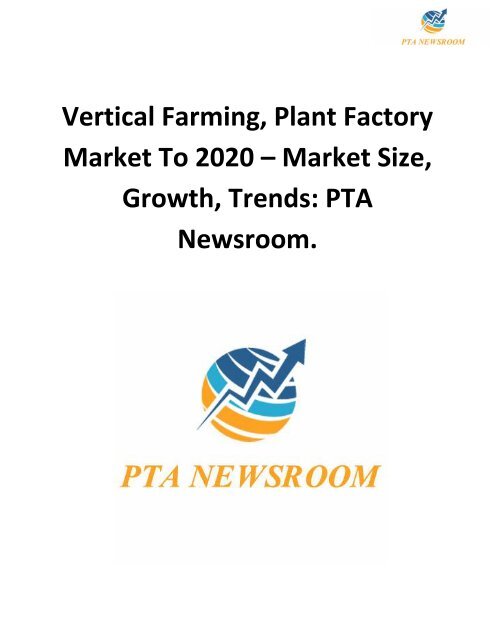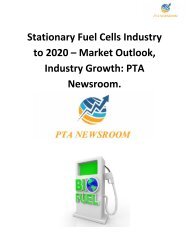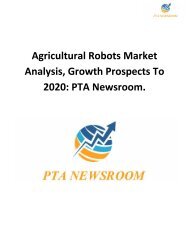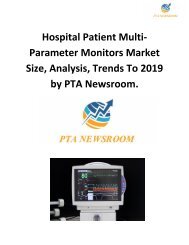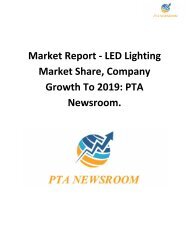Vertical Farming, Plant Factory Market To 2020 – Market Size, Growth, Trends: PTA Newsroom.
Plant Factory (PF), vertical farming is a closed environment in which plants are grown under lights in shelves stacked one on another. All the elements needed for plant growth are artificially controlled, a process that removes detrimental influences such as pesticides and poor weather conditions. Traditional agriculture lives at the mercy of the elements. A plant factory is run based on science. Science is used to produce plants based on carefully controlled spectrum best for plant growth, to produce plants of a fixed quality, quantity, cost, time to harvest, and tuned to control the sale price.
Plant Factory (PF), vertical farming is a closed environment in which plants are grown under lights in shelves stacked one on another. All the elements needed for plant growth are artificially controlled, a process that removes detrimental influences such as pesticides and poor weather conditions. Traditional agriculture lives at the mercy of the elements. A plant factory is run based on science. Science is used to produce plants based on carefully controlled spectrum best for plant growth, to produce plants of a fixed quality, quantity, cost, time to harvest, and tuned to control the sale price.
Create successful ePaper yourself
Turn your PDF publications into a flip-book with our unique Google optimized e-Paper software.
<strong>Vertical</strong> <strong>Farming</strong>, <strong>Plant</strong> <strong>Factory</strong><br />
<strong>Market</strong> <strong>To</strong> <strong>2020</strong> <strong>–</strong> <strong>Market</strong> <strong>Size</strong>,<br />
<strong>Growth</strong>, <strong>Trends</strong>: <strong>PTA</strong><br />
<strong>Newsroom</strong>.
<strong>Vertical</strong> <strong>Farming</strong>, <strong>Plant</strong> <strong>Factory</strong> <strong>Market</strong> <strong>To</strong> <strong>2020</strong> <strong>–</strong> <strong>Market</strong> <strong>Size</strong>, <strong>Growth</strong>,<br />
<strong>Trends</strong>: <strong>PTA</strong> <strong>Newsroom</strong>.<br />
<strong>Plant</strong> <strong>Factory</strong> (PF), vertical farming is a closed environment in which plants are grown under<br />
lights in shelves stacked one on another. All the elements needed for plant growth are<br />
artificially controlled, a process that removes detrimental influences such as pesticides and<br />
poor weather conditions. Traditional agriculture lives at the mercy of the elements. A plant<br />
factory is run based on science. Science is used to produce plants based on carefully controlled<br />
spectrum best for plant growth, to produce plants of a fixed quality, quantity, cost, time to<br />
harvest, and tuned to control the sale price.<br />
<strong>To</strong> request a sample copy or view summary of this report, click the link below:<br />
http://www.ptanewsroom.org/report/vertical-farming-plant-factory-market/details<br />
<strong>Plant</strong> factory weed control is able to achieve crop-yield increases. Robot technology is<br />
deploying machines for weed control, promising to improve crop yields. Robots make the crops<br />
safer by eliminating or virtually eliminating herbicides. Downstream processing system<br />
solutions and robots achieve automation of process. Robots meet stringent hygiene and safety<br />
regulations, work tirelessly 24 hours a day, and relieve human workers of physically arduous<br />
tasks. Robots contribute to the freshness, variety and quality of food. Projects are ongoing.<br />
<strong>To</strong> request or view other reports of this category, click the link below:<br />
http://www.ptanewsroom.org/category/food-and-Beverages-market<br />
Food factories produce organic vegetables. This represents a next step in the application of<br />
automated process to everyday life. Automated process for farming provides immediate help<br />
for food stores. <strong>Plant</strong> factories support farming practices that are not dependent on the<br />
climate. Food factories produce organic vegetables 24 hours a day. With the land available for<br />
farming depleting quickly, new types of farming are evolving.<br />
<strong>Plant</strong> Factories <strong>Market</strong> Driving Forces<br />
• Demand for ability to grow food consistently<br />
• Demand for ability to grow food locally<br />
• Can grow food in warehouses<br />
• Can grow food in the home
• Dedicating space that is efficient for producing food<br />
• Fresh, sanitary food available consistently<br />
• Food factories<br />
• Ability to produce organic vegetables<br />
• Ability to produce vegetables 24 hours a day<br />
• Land available for farming depleting quickly<br />
• New types of farming are evolving<br />
• Growing of vegetables indoors all year round<br />
A plant factory allows the growing of vegetables indoors all year round. It is a system that<br />
artificially creates the environment necessary for plants to grow by controlling the amount of<br />
culture solution, air, and light from light-emitting diodes (LED).<br />
Horticulture lamps address the role of light in the growth and development of plants. <strong>Plant</strong><br />
growth is a function of photosynthesis. The plant growth lights work in three different ways:<br />
• <strong>To</strong> provide all the light a plant needs to grow<br />
• <strong>To</strong> supplement sunlight, especially in winter months when daylight hours are short<br />
• <strong>To</strong> increase the length of the "day" in order to trigger specific growth and flowering<br />
Because the amount of light, temperature, humidity, and carbon dioxide (CO2) concentration<br />
levels can be optimized without being affected by the weather, the growth rate of vegetables is<br />
two to four times faster than those grown in open-air fields, and yields are ten to twenty times<br />
higher.<br />
<strong>Plant</strong> factory market forecast analysis indicates that markets at $403 million in 2013 are<br />
anticipated to reach $1.97 billion by <strong>2020</strong>. <strong>Growth</strong> is a result of the unmitigated march of<br />
automated process driven by the semiconductor industry, by microprocessors, and more<br />
directly by the need for food that is uncontaminated.<br />
The ability to use solar energy to grow food using LED lights is a compelling new way to produce<br />
food. Using plant factory technology the containers can be put in homes and restaurants,<br />
apartments and greenhouses to grow food more efficiently and that is not contaminated with<br />
pesticides or other things that should not be on food. The ability to grow food in layers, 24 x 7<br />
represents a major shift in the way food is provided to people.
About <strong>PTA</strong> <strong>Newsroom</strong><br />
Ptanewsroom.org is your sole source for meeting all the requirements of market research. Our<br />
data folder is inclusive of more than 70, 000 reports related to market research from more than<br />
35 leading worldwide publishers and detailed market research analysis.<br />
We provide you customization alternatives on reports. With complete data on distributors and<br />
the industries for which they distribute, we assist you with making buying choices by recording<br />
your data requirements with our vast compilation of reports.<br />
For more information, visit http://www.ptanewsroom.org/<br />
Contact:<br />
Felton Office Plaza,<br />
6265 Highway 9,<br />
Felton, California, 95018,<br />
United States<br />
Phone: 1-800-489-3075<br />
Email: sales@ptanewsroom.org


